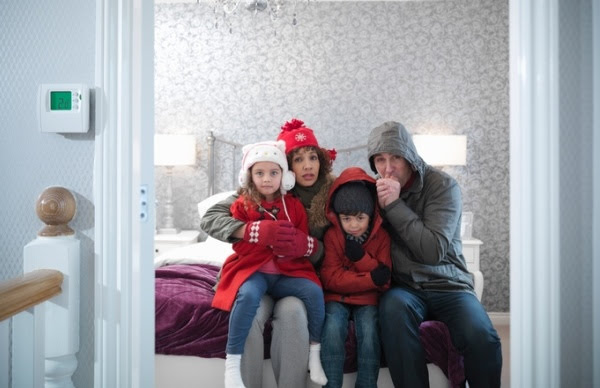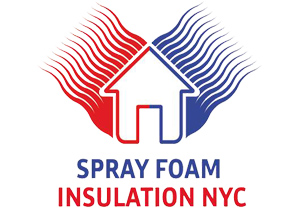Why is my House So Cold Even When the Thermostat is Turned Up? Staten Island, NY

Many houses in Staten Island, New York, NY are to old and were rarely insulated that can get extremely cold Even When the Thermostat is Turned Up
Coming home to a cold house in the middle of winter is the last thing anyone wants – especially when you’re paying for it to be nice and warm! If you feel a chill even when you use your heating system, it’s time to figure out the source of your problem and find a solution
Coming home to a cold house in the middle of winter is the last thing anyone wants – especially when you’re paying for it to be nice and warm! If you feel a chill even when you use your heating system, it’s time to figure out the source of your problem and find a solution
Poor Insulation - Adding Insulation to an Existing Home
Heat can exit your home through freezing floors, warmth-sucking windows, etc., especially in older houses.
Triple pane windows are the best way to prevent heat loss, but if upgrading to this level of insulated windows is not in your budget, make sure you check for gaps or leaks along the edges of your windows and fill them in with caulk.
Get heavier drapes and a set of blinds – thicker materials will trap colder air between the fabric and the window, and even blinds will provide some insulation.
Check outside doors: if you notice a draft when they are firmly shut, it’s time to replace the weather stripping. If the draft is coming in from under the door, install a brush to keep out cold air; door brushes for mail slots are also available.
Another insulation problem could be cold walls. Heat travels through drywall, and if the ceiling opens into an attic, the heat will escape there. You can address that by fitting a board to cover the gap and seal it with foam.
If you have a vaulted ceiling, the heat rises and the lower area cannot stay as warm. The heat is not lost, so if you have a ceiling fan there set it to fan air down and enjoy a warmer lower level of the room.
Triple pane windows are the best way to prevent heat loss, but if upgrading to this level of insulated windows is not in your budget, make sure you check for gaps or leaks along the edges of your windows and fill them in with caulk.
Get heavier drapes and a set of blinds – thicker materials will trap colder air between the fabric and the window, and even blinds will provide some insulation.
Check outside doors: if you notice a draft when they are firmly shut, it’s time to replace the weather stripping. If the draft is coming in from under the door, install a brush to keep out cold air; door brushes for mail slots are also available.
Another insulation problem could be cold walls. Heat travels through drywall, and if the ceiling opens into an attic, the heat will escape there. You can address that by fitting a board to cover the gap and seal it with foam.
If you have a vaulted ceiling, the heat rises and the lower area cannot stay as warm. The heat is not lost, so if you have a ceiling fan there set it to fan air down and enjoy a warmer lower level of the room.
How spray foam insulation warms up a cold room
Now that winter is upon us, have you turned your heat up higher than you’d like? Or do you keep turning the heat down, after discovering someone in your family has turned it up too high? That constant thermostat battle is far from unique, but it doesn’t have to exist once you learn how spray foam insulation warms up a cold room, or a cold house in its entirety.
Why Spray Foam Insulation Is the Ideal Choice For Your Home
Now that you understand the how spray foam insulation, let’s get to the why. It’s already been stated that spray foam insulation ability to expand into tiny gaps and crevices when it is applied allows it to reach parts of the building envelope that might not be reached with traditional material insulation. In terms of performance, this analogy explains it best:
Imagine you’re outside on a cold, late fall day wearing a thick wool sweater. Cozy and warm, right? Now imagine wearing that sweater when the wind picks up. The wind blows right through that sweater, doesn’t it? Now it starts to rain or snow. That sweater is starting to feel wet and soggy, and isn’t doing as great a job at keeping you warm as before.
Now imagine you’re outside in that same weather, only you’re wearing a lined windbreaker jacket. Still cozy and warm, but when the wind blows, you don’t feel it in the same way as when you were wearing the wool sweater. If it starts to rain or snow, that windbreaker is going to do a better job of repelling the moisture than a sweater as well, isn’t it?
Imagine you’re outside on a cold, late fall day wearing a thick wool sweater. Cozy and warm, right? Now imagine wearing that sweater when the wind picks up. The wind blows right through that sweater, doesn’t it? Now it starts to rain or snow. That sweater is starting to feel wet and soggy, and isn’t doing as great a job at keeping you warm as before.
Now imagine you’re outside in that same weather, only you’re wearing a lined windbreaker jacket. Still cozy and warm, but when the wind blows, you don’t feel it in the same way as when you were wearing the wool sweater. If it starts to rain or snow, that windbreaker is going to do a better job of repelling the moisture than a sweater as well, isn’t it?
How to prevent and thaw frozen pipes in your home this winter
STATEN ISLAND, NY : With dangerously cold temperatures in the forecast, Staten Island homeowners may be concerned about making sure their pipes don't freeze.
The pipes that are the most susceptible to freezing are the ones that are directly exposed to the severe cold, such as outdoor hoses, swimming pool supply lines or pipes in unheated indoor places like basements, attics, garages or kitchen cabinets.
What homeowners can do during cold weather:
If your pipes freeze:
The pipes that are the most susceptible to freezing are the ones that are directly exposed to the severe cold, such as outdoor hoses, swimming pool supply lines or pipes in unheated indoor places like basements, attics, garages or kitchen cabinets.
What homeowners can do during cold weather:
- Keep garage doors closed if there are water supply lines in the garage.
- Open cabinet doors to allow warmer air to circulate around un-insulated pipes under a sink or appliance near an outer wall.
- When it is extremely cold at night, let hot and cold water drip from the faucet served by expose pipes. Running water through the pipe helps prevent freezing.
- Keep the thermostat set to the same temperature both during the day and at night, and make sure your thermostat is set to no lower than 55 degrees.
- If you plan to be away, drain and shut off your water system (except for indoor sprinkler systems) and have someone check your home daily to make sure the heat is on.
If your pipes freeze:
- Keep the faucet open -- running water through the pipe will help melt ice.
- Make sure you and your family knows how to shut off the water in case pipes burst. Stopping the water flow minimizes the damage to your home.
- If a pipe bursts, contact the FDNY to avoid potential electrocution.
- Never try to thaw a pipe with an open flame or torch.
- Apply heat to the section of pipe using an electric heating pad wrapped around the pipe, an electric hair dryer, a portable space heater (kept away from flammable materials), or by wrapping pipes with towels soaked in hot water. Always be careful of the potential for electric shock in and around standing water.
- If you are unable to locate the frozen area, if the frozen area is not accessible, or if you can not thaw the pipe, call a licensed plumber, 311 or the Individual Assistance division of the New York state Office of Emergency Management.
- Always consult your insurance company for coverage on any repairs that may be required.
